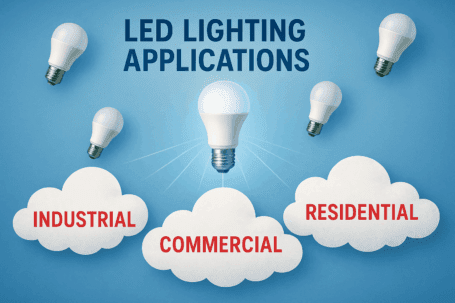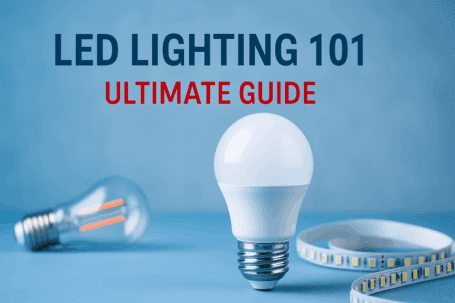Even though nobody wants to go back to candles, there has been considerable criticism of the poor old incandescent bulb, which has served civilization faithfully for over 130 years. In 2007, President G.W. Bush signed into law a requirement that “screw in” light bulbs will have to be 60 or 70 percent more efficient than today’s incandescent bulbs. The trouble is that 90 percent of the energy that goes into an incandescent bulb is required to heat the metal filament in the bulb to 4,000 degrees Fahrenheit, which is necessary to produce light. The US law does not ban incandescent bulbs, but those conditions are impossible for incandescent bulbs to meet. Manufacturers have phased out old-style 100-watt bulbs [The Washington Post]. “Traditional” incandescent bulbs have been banned from being sold in some states, including California.
So What Do We Replace Them With?
Two current options will meet the efficiency requirement of President Bush’s bill.
The Compact Fluorescent bulb is one option. The bulbs are cleverly engineered versions of the long fluorescent tubes commonly found on the ceilings of stores and offices. What the engineers did was take the tube (which has to have a certain length and size to generate sufficient light) and bend it into either a U-shape or a shape resembling a spring. Sometimes, the bulbs are mounted in a glass cover, giving them a similar appearance to incandescent bulbs. In each case, the bulb itself is mounted on top of a heavier-than-incandescent base, which serves as the ballast.
Compact Fluorescents.
The principle behind the fluorescent bulb is slightly more complex than that of other lighting systems.
- When you screw the bulb into your lamp socket and turn on the light, AC electric current passes through an adapter in the base of the bulb which changes the current into direct current (DC). The base of the bulb also contains a “starter” and a suppression capacitor. This small system is called the ballast. It builds the current up to the level needed to start the bulb working and serves to maintain a constant voltage because fluctuating voltage in these bulbs will cause flickering lighting.
- The current is drawn through the tube, which is filled with mercury vapor (and other gases). When the electrons in the tube crash into mercury molecules in the tube, the gas glows with invisible ultraviolet light.
- The glass is coated with a phosphorescent material similar to the kind that makes things glow in “black light.” The ultraviolet light causes the phosphorescent powder in the tube to glow in visible light, which is the light emitted by the lamp.
There are two disadvantages of the compact fluorescent system.
The major disadvantage is that they must be filled with mercury vapor, which is highly hazardous to the environment. These compact fluorescent light bulbs cannot be disposed of in regular trash; instead, they need to be recycled specially.
The second (perhaps less important) disadvantage is that these bulbs require a ballast. The presence of the ballast makes the bulb fitting slightly different from the standard screw-in fitting, so the bulbs don’t fit in every socket. The ballast also slows the start of the light. When you turn the light on, there is a slight delay before the light turns on.
Light-emitting Diodes (LED lights).
The light-emitting diode (LED) lamp is the second option. LEDs are the result of a long history of research into special crystals called semiconductors (similar to crystals used in computer chips). These crystals simply glow when you attach them to an electrical source. The circuitry in the LED lamp is very simple. You simply need a current to change AC to DC current (AC is alternating current–the kind of current that comes through your plug from the electric company to DC (direct current–the type of current that comes from a battery). The current is reduced to the correct voltage and connected to the crystal, and it glows on its own. This is a property of the matter in the crystal. You often see lamps where there is no apparent bulb, just a small piece of crystal at the base of the lamp that is the source of all the light. LEDs do not generate high temperatures. They tend to last a lot longer than incandescent bulbs and even longer than compact fluorescent bulbs.
Research into the properties of these crystals, which enables the direct creation of light from electrical energy, is leading to the development of new forms of lamps. Whole wall panels that light up, tubes whose surface has light-emitting properties, and even light-emitting paper and flexible plastics.
Relumination was founded on the idea that automated lighting control and new low-energy lights can save energy, which is less expensive than finding ways to produce more. Contact us to learn more.





